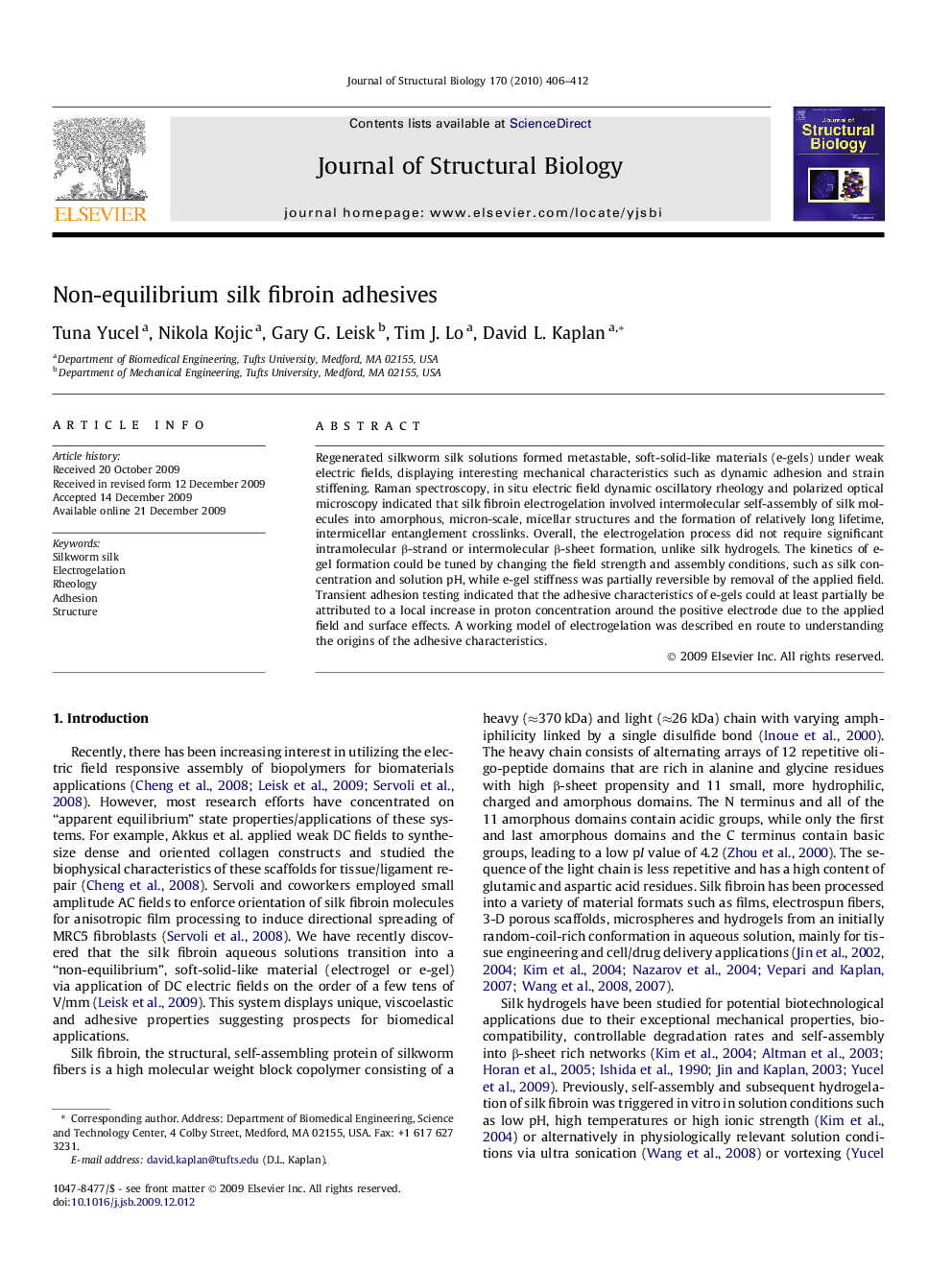| Article ID | Journal | Published Year | Pages | File Type |
|---|---|---|---|---|
| 5915030 | Journal of Structural Biology | 2010 | 7 Pages |
Abstract
Regenerated silkworm silk solutions formed metastable, soft-solid-like materials (e-gels) under weak electric fields, displaying interesting mechanical characteristics such as dynamic adhesion and strain stiffening. Raman spectroscopy, in situ electric field dynamic oscillatory rheology and polarized optical microscopy indicated that silk fibroin electrogelation involved intermolecular self-assembly of silk molecules into amorphous, micron-scale, micellar structures and the formation of relatively long lifetime, intermicellar entanglement crosslinks. Overall, the electrogelation process did not require significant intramolecular β-strand or intermolecular β-sheet formation, unlike silk hydrogels. The kinetics of e-gel formation could be tuned by changing the field strength and assembly conditions, such as silk concentration and solution pH, while e-gel stiffness was partially reversible by removal of the applied field. Transient adhesion testing indicated that the adhesive characteristics of e-gels could at least partially be attributed to a local increase in proton concentration around the positive electrode due to the applied field and surface effects. A working model of electrogelation was described en route to understanding the origins of the adhesive characteristics.
Related Topics
Life Sciences
Biochemistry, Genetics and Molecular Biology
Molecular Biology
Authors
Tuna Yucel, Nikola Kojic, Gary G. Leisk, Tim J. Lo, David L. Kaplan,
